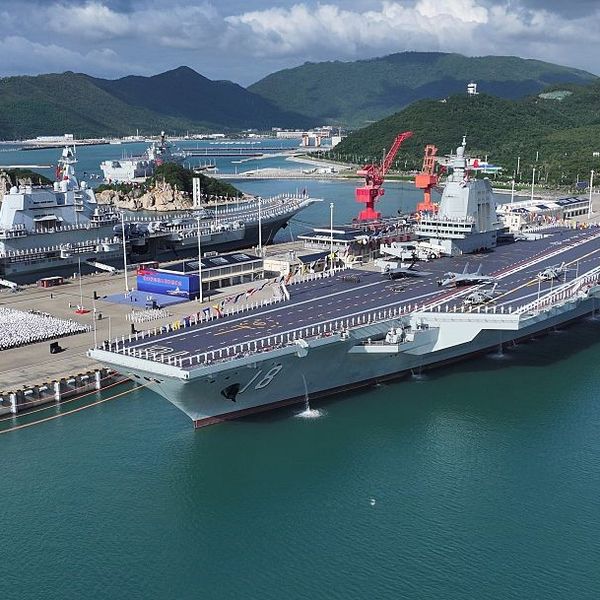Bottom Line Up Front
- The Quadrilateral Security Dialogue, or Quad, comprising the United States, India, Japan, and Australia, has reemerged in recent years in response to an increasingly assertive China.
- Frictions between China and all four Quad countries has created the conditions for the grouping’s reemergence and recently elevated profile.
- In particular, a longstanding shift in India’s foreign policy away from non-alignment and toward the United States has significantly strengthened the Quad arrangement.
- Cooperation at the level of joint naval exercises and ministerial-level meetings signify that the Quad is here to stay, regardless of electoral politics in the member countries.
China’s increasingly assertive posture in Asia has reinvigorated the Quadrilateral Security Dialogue, or ‘Quad,’ comprising the United States, India, Japan, and Australia. This is not a novel arrangement; the Quad initially emerged in 2007, largely at the behest of Japanese Prime Minister Shinzo Abe. However, it soon fell into abeyance, as Australia and India harbored reservations about potentially antagonizing China, then the third-largest economy in the world (and now the second-largest). The Quad’s resurrection, which began in earnest in late 2017, has been fueled by wariness in Washington, Delhi, Tokyo, and Canberra over Beijing’s increasingly confident and aggressive foreign policy. The situation in Hong Kong, the line of actual control (LAC) on the border with India, and the South China Sea all serve to illustrate Beijing’s increasingly cavalier security posture. Disputes over trade, intellectual property theft, China’s abuse of its Muslim Uighur minority, Hong Kong, cross-strait relations, and the origins of the coronavirus pandemic have deepened the U.S.-China divide to a perhaps irreconcilable degree.
After the shift in U.S. posture toward China from cautiously cooperative to openly adversarial, a notable development enabling the resurrection of the Quad has been India’s gradual abandonment of its longstanding non-aligned outlook in favor of a closer partnership with the United States. This shift has been reciprocated by the United States in a process which began under the George W. Bush administration, continued under the Obama administration, and has accelerated under the Trump administration. While India, unlike Japan and Australia, is not a formal treaty ally of the United States, the Trump and Modi administrations have deepened ties between the two countries through extensive defense cooperation, including arms deals. Prime Minister Narendra Modi’s Hindu nationalist and majoritarian policies have proved not to be an impediment to strengthening ties with the Trump administration, as they likely would have under previous U.S. administrations. The recent border clash with China, in which 20 Indian and an unknown number of Chinese soldiers were killed, inflamed opinion in India against China and is likely to contribute to the deepening divide between the countries despite attempts at de-escalation.
Recently India has also shored up its relationships with the other Quad members, Japan and Australia. India is actively considering whether to invite Australia to join the Malabar naval exercises for the first time alongside Japan and the United States, a move which Australia sought and which China opposes. For its part, Australia under the Scott Morrison government has moved away from China, driven by China’s growing influence in Australia’s internal affairs, accusations of Chinese cyberespionage and an increasingly antagonistic trade relationship. The relationship worsened after China angrily rejected Australia’s call for an international inquiry into the origins of the COVID-19 pandemic and slapped tariffs on Australian products in response. Japan, the originator of the Quad idea, has consistently supported the framework, and actively pursued tangible steps to deepen intelligence sharing with both India and Australia.
This iteration of the Quad has seen cooperation at high levels of government, with a ministerial-level meeting occurring on the sidelines of the United Nations General Assembly in September 2019. The meeting was a sign of the Quad’s likely durability in a world where geopolitics turn increasingly on China’s actions, choices, and relationships with other countries. Electoral politics in Quad countries could play a role in shaping the contours of the arrangement, but are not likely to reverse its solidification, at least not in the short term. For now, conservative and right-wing populists lead all four states. Given China’s already existing bipartisan unpopularity in the United States, it remains difficult to envision a possible change in administration weakening America’s commitment to the Quad approaching the November 3rd U.S. election. And with elections in Japan, Australia, and India not slated to be held until October 2021, 2022, and 2024, respectively, it is safe to assume that for the time being at least, the Quad is here to stay.








